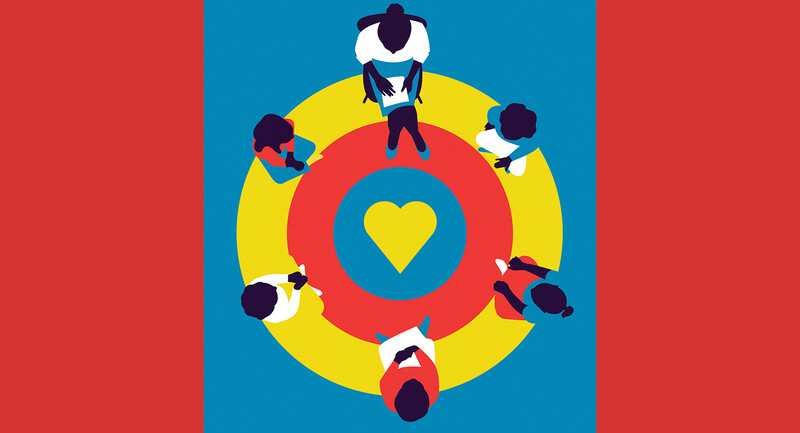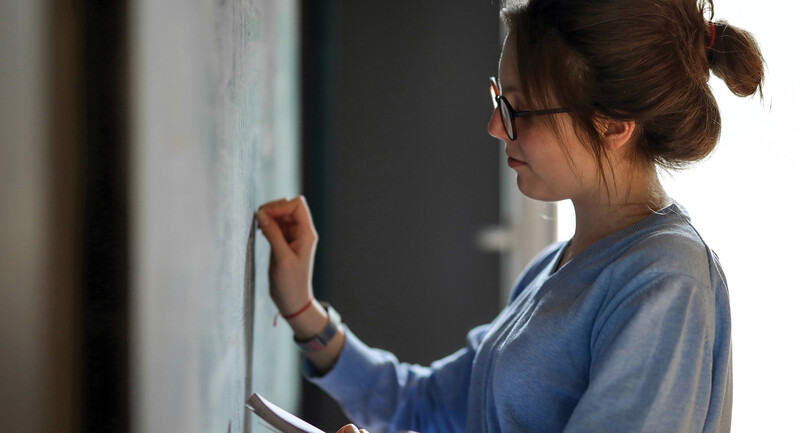The first time I went to prison, I was a high school teacher in Seattle. My principal invited me to a meeting with the Black Prisoners' Caucus (BPC) at the Monroe State Prison, about 30 miles outside the city. He explained that the BPC's mission is to dismantle the school-to-prison pipeline for African American students and students of color and tackle disparities in the education system. They had set up a monthly "think tank" at Monroe with a group of aspiring and practicing teachers from the Seattle area. Engaging in these conversations pushed teachers to ask how their own ideas, prejudices, and behaviors impact the students in their classrooms. This sounded like important work, so I agreed to go. I had no idea what I would experience or how much it would change me.
Failing Mr. Warren
On my first visit with the BPC, educators and inmates sat in a big circle and took turns sharing and listening to stories about schooling. One of the first stories was from the oldest and longest-serving inmate, Mr. Warren (all names changed):
When I was in 3rd grade, I still cared about school. I did my homework and worked hard. At the start of my 4th grade year, we had an assignment to write a book report. We got that assignment on a Friday. I was so excited that I went home and read my whole book and wrote my report over the same weekend. I remember this assignment because I went in early to share my report with my teacher. She looked over the assignment and asked, "What's this?" I told her it was my book report—that I had finished the assignment over the weekend. Before I could say another word, she tore the pages of the report out of my notebook and threw them in the trash can. "This isn't your work," she said. "This time, read the book and write the report yourself."
Unable to continue, Mr. Warren stopped his story there, only managing to get out a few more largely inaudible words about how angry and demoralized he felt by that exchange. Here we were in a state prison, and a 70-year-old man—who had been incarcerated for more than 50 years—was crying about something that had happened to him in a public school 60 years ago. Mr. Warren's story was powerful, sad, and, I would come to learn, not unusual. Our jails and juvenile halls are filled with people who have similar stories.
Teaching Inside-Out
A few years ago, when I became a teacher educator at the University of Redlands, I wanted to create an experience for aspiring teachers that was similar to the BPC teacher meetings. I learned about the Inside-Out Prison Exchange Program, an initiative started by Lori Pompa at Temple University in 1997. With Inside-Out courses, college students spend a semester learning alongside incarcerated individuals in a prison or juvenile justice setting. There are hundreds of these courses at universities around the world for students studying everything from criminal justice to sociology.
Now, every fall, I teach an Inside-Out course that brings aspiring teachers face-to-face (often for the first time) with students who have been pushed out of the education system and into the juvenile justice system. We meet inside the San Bernardino Juvenile Hall—10 students from the University of Redlands ("outside" students) and 10 students who are incarcerated ("inside" students). All students are encouraged to write about, discuss, and reflect on their schooling experiences. Together, we explore big questions about the purpose of schools, the meaning of education, and the role of the teacher in schools and communities.
Learning Through Crisis
Entering a locked facility to learn alongside and hear the stories of incarcerated people can have a profound effect on participants and lead them to rethink fundamental beliefs about justice, equity, and opportunity. In his book Against Common Sense: Teaching and Learning Toward Social Justice, Kevin Kumashiro describes this as "learning through crisis." That is, students and teachers who participate in these courses often experience a type of crisis, as the interactions challenge their beliefs and assumptions in ways they hadn't expected.
This crisis, however, does not guarantee learning, growth, or healing. "Crisis can lead a student to desire change, but it can also lead a student to resist change even more strongly than before," Kumashiro reminds us. The critical piece for anyone doing this type of work is that the "crisis" is accompanied by collective inquiry and an emerging analysis that can help teacher candidates see students, schools, and communities within an intersecting framework, including the political, educational, economic, and juvenile justice systems.
Deconstructing School Discipline
One of the purposes of the Inside-Out course is to help teacher candidates develop the ability to see the education and the justice system in new and critical ways. In one activity I use to begin this work, I ask the Inside-Out students to raise their hands if they have ever been suspended or expelled from school. While there may be students from both groups who raise their hands for this activity, it's almost always the case that every one of the incarcerated or "inside" students raises their hand.
This activity helps open a discussion about the types of behaviors or situations that lead to suspensions and the effects such suspensions or expulsions had on students' view of education. We discuss the nature and purpose of school discipline, the role of race and class, the differences between restorative and retributive justice, and how schools can improve support for students who are struggling.
We talk about who went to schools where metal detectors guarded the entrance or armed police were a constant presence. We contrast this discussion with stories from students who went to schools where they never saw police on campus and where resources and opportunities were plentiful. We ask questions about why and how this happens, as well as what it means in a society where more and better education is often the only viable pathway to economic mobility. We talk about systemic problems and individual choices and how these two ideas intersect, structuring or hindering opportunities.
Healing Through Stories
In a similar activity, I ask students if they have experienced, participated in, or witnessed a crime or violence. This moves us toward a conversation about how to heal ourselves, take responsibility, and repair the harms we may cause. We discuss the challenges to enacting and participating in a restorative, rather than a retributive, model of justice and accountability.
Because my course is primarily about education, we also spend a significant time exploring what it means to teach and to learn. In particular, we try to describe what education and learning look like both in and out of school. We also discuss the "hidden curriculum" in schools—how schools teach about gender, sexual orientation, race, and class. Many of the "inside" students have been convinced by their school experiences that they are not smart and their lack of success in school is entirely their own fault. State tests, for example—wrapped in the seemingly neutral authority of scientific validity—prove this to them, again and again.
Unsettling Education
As aspiring educators gain awareness about how institutions like schools privilege certain students while marginalizing others, many realize that what we do in our individual classrooms will never be enough to address all of the social, economic, and political issues that follow our students into schools. Faced with what seem like insurmountable odds, many teachers want to retreat back to the classroom to focus on simply teaching the curriculum.
Although it's true that teachers can't be expected to solve all of our social problems tomorrow, we can help new and aspiring teachers to identify problems and work through crisis so that they are better prepared to intentionally link the work they do in school to challenges that students and communities face. In my Inside-Out course, our culminating class project invites "outside" students (aspiring educators) to work in groups with "inside" students (youth who are incarcerated) to address some of the issues they identified together. I encourage them to think carefully about how teachers might become better connected to, and more present within, the communities where they work.
Learning through crisis is neither simple nor easy, but the process can be profound and transformative. Educators in the Inside-Out course experience something that challenges them to re-imagine the role of the teacher and the purposes of schools in new ways that often lead them to venture beyond the walls of their classroom and to see that school and community revitalization are reciprocal, not separate, projects. We don't need to wait for someone to tell us what to do or when to act as concerned citizens. All of us can authorize ourselves to engage in this critical work with our students, colleagues, and community allies.








